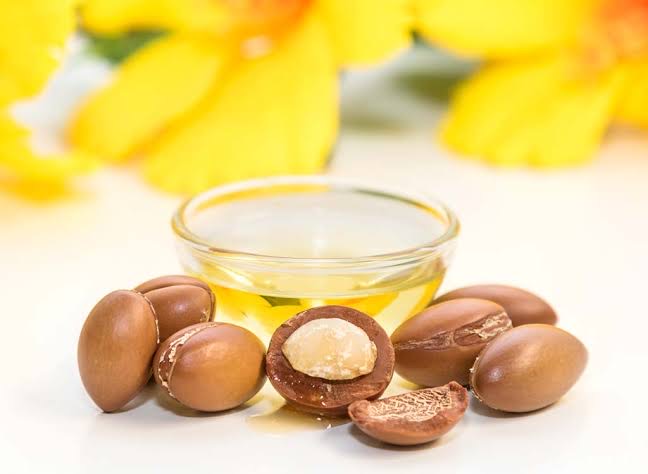Argan oil, often celebrated as “liquid gold,” is a precious and versatile oil derived from the kernels of the Argan tree (Argania spinosa), which is native to Morocco. This oil has been used for centuries in culinary, cosmetic, and medicinal applications. Packed with essential nutrients, vitamins, and antioxidants, argan’s oil is renowned for its myriad of health and beauty benefits.
Origins and Production
Argan oil is extracted from the nuts of the Argan tree, which grows almost exclusively in the semi-desert regions of southwestern Morocco. The production process involves several steps:
1. Harvesting: The fruit is harvested and dried in the open air.
2. Kernal Extraction: The outer flesh of the fruit is removed, and the hard nut is cracked open to extract the oil-rich kernels.
3. Cold Pressing: The kernels are cold-pressed to produce pure argan oil, ensuring that the oil retains its nutritional and cosmetic properties.
The traditional methods of extraction, often performed by women’s cooperatives in Morocco, ensure high-quality oil while supporting the local economy and providing social benefits to the communities involved.
Nutritional Profile
Argan oil is loaded with beneficial compounds, including:
– Vitamin E: A powerful antioxidant that protects the skin and hair from damage.
– Essential Fatty Acids: Primarily oleic and linoleic acids, crucial for maintaining healthy skin and hair.
– Polyphenols: Compounds that have anti-inflammatory and antioxidant properties.
– Sterols: Compounds that can help reduce inflammation and improve skin barrier function.
Health and Beauty Benefits
1. Skin Care: Argan oil is a superior natural moisturizer that is suitable for all skin types. Its high content of vitamin E and essential fatty acids makes it effective in hydrating and softening the skin. The oil helps to improve skin elasticity, reduce the appearance of fine lines and wrinkles, and enhance overall skin tone. Its anti-inflammatory properties can soothe conditions such as eczema, psoriasis, and acne.
2. Hair Care: Argan oil is widely used in hair care products for its conditioning and strengthening properties. It helps to repair damaged hair, reduce frizz, and add shine. Regular use can prevent split ends and promote healthier, faster hair growth. A few drops massaged into the scalp can also alleviate dandruff and dryness.
3. Anti-Aging: The antioxidants in argan oil help combat the signs of aging by neutralizing free radicals that can damage skin cells. Regular use of argan oil can lead to a more youthful, radiant complexion, reducing the appearance of wrinkles and age spots.
4. Nail and Cuticle Care: Argan oil can strengthen nails and moisturize cuticles, preventing them from becoming dry and brittle. Regular application can lead to healthier, stronger nails and smoother cuticles.
5. Heart Health: When consumed, argan’s oil can have significant health benefits. It has been shown to help lower cholesterol levels, improve circulation, and reduce the risk of cardiovascular disease. Its anti-inflammatory properties also support overall well-being.
Culinary Uses
In addition to its beauty benefits, argan’s oil is also used in cooking, particularly in Moroccan cuisine. It has a mild, nutty flavor that makes it a delightful addition to salads, dips, and even as a drizzle over grilled vegetables or fish. Culinary-grade argan oil is packed with antioxidants and essential fatty acids that contribute to heart health and overall wellness.
Sustainable and Ethical Production
The production of argan’s oil is not only beneficial for those who use it but also for the environment and local communities in Morocco. The Argan tree forests help prevent desertification and support biodiversity. Women’s cooperatives involved in the production of argan oil play a crucial role in the local economy, providing fair wages, education, and opportunities for empowerment.

Argan’s oil is a versatile and nutrient-rich oil that offers a wide range of health and beauty benefits. From moisturizing and protecting the skin to nourishing the hair and promoting heart health, this liquid gold is a valuable addition to both your skincare regimen and diet. Embracing the benefits of argan oil can lead to enhanced well-being, a more youthful appearance, and a healthier lifestyle.
Pingback: The Argan Tree - SimplExplainer